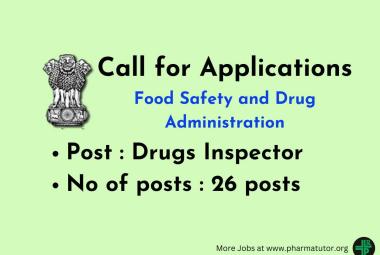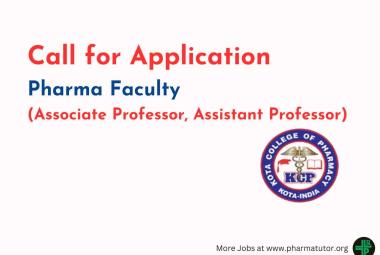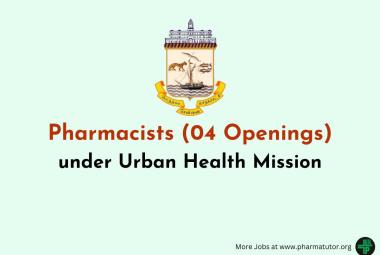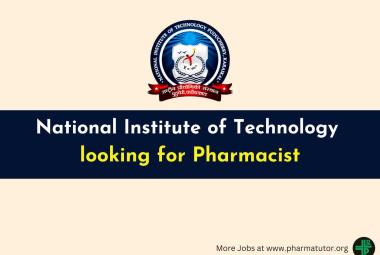ABOUT AUTHORS:
Mr. R. Krishnaswamy, Dr.R.Sampathkumar, Mr.N.Venkateswara Murthy, Mr. Anton Vinoth.T
Department of Pharmacy Practice J.K.K.Naatraja College of Pharmacy,
Komarapalayam, Tamilnadu.
*krishnasamy1993@gmail.com
ABSTRACT
To make decisions regarding the control of communicable diseases and to reduce the epidemic situations, this article has been presented in the way of studying about the epidemiology which involves monitoring information regarding emerging & reemerging diseases, its causative agents, treatment etc., This article also relates studying about mode of transmission(through vector (or) through contact) which helps in making decisions regarding its prevention and to prevent its spreading.
REFERENCE ID: PHARMATUTOR-ART-1843
INTRODUCTION
Communicable diseases occur due to infectious agents or its toxic products which is transmitted either directly or through an intermediate host, vector or an inanimate environment.
Communicable diseases includes both “infectious” and “contagious diseases”.
Infectious Diseases:-
It is a disease resulting from infections.
Contagious Diseases:-
It is a disease which is transmitted from one individual to the other by direct contact.
MODE OF TRANSMISSION
Communicable diseases are transmitted through,
- Contact
- Air
- Water
- Insects
- Animals(zoonotic)
- Placenta
These, mode of transmission of communicable disease have various sub-divided routes.
They are,
ROUTE:
CONTACT TRANSMISSION:
The agents which produce the disease can be transmitted by,
- Direct Contact
- Indirect Contact
Direct Contact:
It is directly transmitted from the infected patients.
Eg:Venereal diseases & skin infections
Indirect Contact:
It is through contaminated objects like clothes, towels, utensils & other articles.
Eg: tuberculosis, measles, mumps and chicken pox.
AIR BORNE TRANSMISSION:
Air borne diseases are classified based on the methods by which they are transmitted as,
- Droplet Infection
- Droplet Nuclei
- Infected Dust
Droplet Infection:-
It occurs due to droplets containing infectious organisms expelled during coughs, sneezing, or taking loudly.
Eg : tuberculosis, diphtheria, meningitis, whooping cough, measles, chicken pox, mumps, influenza.
Droplet Nuclei:-
It occurs due to formation of small residues of nuclei which are formed due to evaporation of droplets. These nuclei being very small and light may remain in air for a long time.
Eg: tuberculosis, influenza, chicken pox, and measles.
Infected Dust:-
It occurs due to settling down of droplets on the floor, cloths or bedding and forms the part of the dust.
Eg:tuberculosis, pneumonia, psittacosis, Q fever.
WATER BORNE TRANSMISSION
- Water gets contaminated with minerals and micro organisms. All these are likely to produce a variety of diseases.
- It is due to the presence of infectious agents in water.
Bacterial Diseases:- Cholera, dysentery, typhoid fever, gastroenteritis.
Viral Diseases:- Hepatitis, poliomyelitis.
Protozoal Diseases:- Amoebiasis , giardiasis.
Worm Infestations:- Round worm, thread worm, tape worm and guinea worm.
INSECT BORNE TRANSMISSION
- Insect like arthropods transmit diseases by biting or by depositing the infected materials on skin.
- The infective agents can be carried mechanically by insect or may be developed and multiplied in insect itself before transmission.
Diseases transmitted by insects are,
Mosquito:- Malaria , filarial and encephalitis.
House Fly: Cholera, typhoid, diarrhoea, dysentery and poliomyelitis.
Sand Fly:- Kala-azar , sand fly fever and oriental sore.
Rat Flea:- Bubonic plague and epidemic typhus
Itch Mite:- Scabies
ANIMAL BORNE TRANSMISSION (Zoonotic):
Zoonotic diseases are those which are transmitted by animals. The zoonotic diseases can be classified as,
* Viral Diseases:-
Rabies (transmitted through dogs).
* Bacterial Diseases:-
Tuberculosis, brucellosis (transmitted through cattle).
* Fungal Diseases:-
Dermatophytosis (transmitted through cats & dogs).
* Protozoal Diseases:-
Amoebiasis (transmitted through dogs).
* Rickettsial Diseases:-
Q fever (transmitted through cattle).
PLACENTAL TRANSMISSION
Some diseases are transmitted from the mother to the foetus through placenta.
Eg: measles, rubella and syphilis.
EPIDEMIOLOGY
RESPIRATORY INFECTION
|
DISEASE |
CAUSATIVE AGENTS |
CHARACTERIZATION |
TRANSMISSION |
INCUBATION PERIOD |
PREVENTION TREATMENT |
|
Small pox |
Variola virus |
Sudden onset of fever, head ache, back ache, vomiting, convulsions in children On third day of fever a typical rash appears which is centrifugal in distribution and passes through Successive stages of macule, papule, vesicle, pustle and scab. |
Droplet inflection |
About 12 days |
Vaccination and revaccination every 3-5 years. |
|
Chicken pox |
Herpes virus Varicella zoster |
Vesicular rash accompanied by fever and malaise |
Droplet inflection Droplet nuclei Fomites |
About 14-16 Days |
Varicella Zoster Immunoglobulin [VZIG] |
|
Measles [rubeola] |
Measles virus [myxo viruses family] |
Fever, Catarrhal symptoms of upper respiratory tract [coryza, Cough]. Typical rash |
Droplet inflection Droplet nuclei Direct contact |
10-14 days |
Measles vaccination |
|
Rubella [German Measles] |
Rubella virus [RNA Virus] Togavirus family |
Low grade fever, lymphadenopathy, maculopapular rash. |
Droplet nuclei |
2-3 weak (or) 18 Days |
Rubella Vaccine |
|
Mumps |
Myxovirus Parotiditis [RNA Virus] Genus àRubella Virus Family àpara-myxoviridae |
Non-Suppurative enlargement and tenderness of one or both the parotid grand |
Droplet infection Fomites |
Varies from 2-3 weeks (or) 18 Days. |
Live attenuated mumps vaccine |
|
Influenza |
Influenza Virus Familyàorthomyxoviridae |
Sudden onset of chills, malaise, fever, muscular pain and cough |
Droplet infection Droplet nuclei |
18-72 hours |
Prophylactic Immunization with influenza vaccine. |
|
Diphtheria |
Toxigenic stains of corynebacterium diphtheriae |
Skin, conjunctiva, vulva and other parts of the body were affected. |
Air-Borne Transmission |
2-6 Days |
1. Treatment with diphtheria antitoxin. 2. Immunization by administering diphtheria vaccines or DPT(Triple antigen). |
|
Whooping-Cough [Pertussis] |
Bordetella pertussis |
Insidious onset with mild fever and an irritating cough, whooping synosis and vomiting |
|
7-1 4 Days |
1. Treatment with choramphenicol (or) Tetracycline. 2. Immunization with pertussis vaccine / DPT. |
|
Meningococcal meningitis [cerebrospinal fever] |
N. Meningitidis |
Intense head-ache, vomiting, stiff-neck and progresses to coma |
Droplet infection |
3-4 Days |
1. Treatment with rifampicin(antibiotics). 2. Meningococcal vaccine. |
|
Acute respiratory infections |
Bacteria:- Virus:- |
Running nose, cough, sore throat, Difficult breathing, ear problems, fever pneumonia. |
Air-Borne route by direct contact |
----------- |
1.measles vaccine 2.HIB vaccine 3.pneumococcal pneumonia vaccine ppv 23 , pcv 7 |
|
Severe acute respiratory syndrome [SARS] |
New stains of corona virus |
Fever, malaise, chills, head ache, myalgia, dizziness, cough, sore throat, running nose. Rapid determination of low oxygen saturation. |
Droplet infection Direct contact |
3-5 Days |
Antiviral agent ribavirin given intravenously in combination with high dose of corticosteroids |
|
Tuberculosis |
Mycobacterium tuberculosis |
Prolonged cough, rise of temperature in evening, loss of weight, loss of appetite, opacity of lungs, affects the tissues of intestine, meninges, bones, joints, lymph glands etc., |
By droplet infection Droplet nuclei |
3-6 Weeks |
1.rifampicin, isaniazid & pyrazimamide. 2.immunisation with BCG vaccination. |
|
Poliomyelitis |
Poliovirus(RNAvirus) |
Infects the human alimentary tract and also infects the CNS causing paralysis. |
Faecal oral route. Droplet infections |
7-14 Days |
1.inactivated polio vaccine[IPV] 2.oral polio vaccine[OPV] |
|
Viral hepatitis |
Hepatitis A,B,C,D,E,G virus Cytomegalo virus, Epstein bar virus, Yellow fever virus & rubella virus. |
Loss of appetite, nausea, jaundice, hepatic coma &death. |
Faecal oral route, Sexual transmission. |
Hepatitis A 10-50 Days, Hepatitis B 50-180 Days. |
Personal cleanliness, safe disposal of excreta, Hepatitis vaccination. |
|
Acute diarrhoeal diseases |
Virus:- Rota virus. Bacteria:- Enterotoxigenic E.coli Shigella, Salmonella, Vibrio cholerae 01. Campylobacter jejuni Protozoans:- cryptosporidium
|
Frequent passage of loose, liquid or watery stools. |
Faecal oral route |
------------ |
Oral rehydration therapy |
|
Cholera |
vibrio cholera 01. |
Sudden onset of profuse, effortless, watery diarrhoea, vomiting, rapid dehydration, muscular cramps & suppression of urine (anuria) |
Faecally contaminated water. Direct Contact |
1-2 Days |
Oral cholera vaccine |
|
Typhoid fever |
Salmonella typhi |
Increase in body temperature to the extent of 1 degree every day. Severe head ache, back pain, dry &coated tongue. |
Faecal Oral Route. Urine Oral Route. |
10-14 Days |
Immunization by typhoid vaccine. |
|
Food poisoning |
Salmonella typhimurium, Salmonella cholera-suis, Staphylococcus aureus, Clostridium botulinum, Bacillus cereus. |
History of ingestion of common food. Toxic & allergic reactions in the body. |
Faecal Oral Route |
6-14 Hours |
Food sanitation. |
|
Amoebiasis |
Entamoeba histolytica |
Intestinal amoebiasis:- Dysentery, amoeboma, diarrhoea. Extra intestinal amoebiasis:- Affects liver, lungs or brain. |
Faecal Oral Route. Sexual Transmission. |
2-4 Weeks |
1.Food Hygiene. 2.Oral Treatment with Metronidazole. |
|
Ascariasis |
Ascaris lumbricoides. |
Nausea, abdominal pain & cough |
Faecal oral Route |
2 Months |
Treatment with Piperazine, Mebendazole, Levamisole, Pyrantel. |
|
Hook worm infection |
Ancylostoma duodenale, Necator americanus. |
Loss of appetite, lassitude, weakness & anemia. |
Larva of the worm enters through skin of the leg. |
7 Weeks |
Treatment with anthelmintic drugs. |
|
Dracunculiasis |
Dracunculus medinensis [nematode parasite] |
Penetrates into dermis & |
Water borne disease transmitted entirely through consumption of water containing Cyclops harbouring the infective stages of parasite. |
------------- |
1.Treatment with Niridazole, Mebendazole & Metronidazole. 2.Provision of safe drinking water. |
|
ARTHROPOD BORNE INFECTIONS: |
|||||
|
Dengue syndrome |
aedes aegypti & aedes albopictus which acts as the vector. |
Dengue haemorrhagic fever without or with shock. Thrombocytopenia. |
Transmitted through mosquitoes.
Direct contact |
-------------
|
1. no immunization therapy. 2.treatment with leaf juice of papaya. |
|
Malaria |
Genus- plasmodium |
Periodic chills, fever, enlargement of spleen. Secondary anaemia. |
Transmitted by bite of female anopheles mosquito. Direct contact. |
10 Days
|
Treatment with antimalarial drugs like quinine & chloroquine. |
|
Lymphatic filariasis |
W.bancrofti, B.malayi, B.timori. |
Lymphangitis, lymphadenitis, elephantiasis of genitals,legs & arms. Tropical pulmonary eosinophilia, filarial arthritis, suffering, deformity, disability. |
Transmitted by the bite of cluex mosquito & monsonia mosquitos which acts as vector. |
Prepatent Period. |
Treatment with antifilarial drugs like diethyl carbamazine [hetrazan]. |
|
Rabies |
Lyssa virus type 1. Family-rhabdo viridae. |
Hydrophobia, highly fatal viral disease of central nervous system. |
Transmitted by bite of rabid animals like dogs & cats. |
3-8 Weeks |
1.post-exposure prophylaxis. 2.pre-exposure prophylaxis. 3.human antirabies vaccination. |
|
Yellow fever |
Flavivirus fibricus [arbo-virus] |
Jaundice with haemorrhagic manifestations like black vomit, epistaxis, melena & albuminuria, anuria, shock, agitation, stupor & coma. |
Transmitted by sylvan cycle(monkey to person) & urban cycle (person to person) Through mosquitos & direct contact. |
3-6 Days |
17D vaccine. |
|
KFD [Kyasanur forest Disease] |
Flavivirus [Togaviruses] |
Febrile disease associated with Haemorrhages. |
Transmitted by bite of infective ticks. |
3-8 Days
|
Immunized with killed KFD vaccine. |
|
Chikungunya Fever |
Chikungunya virus (Group A- virus) |
High fever, severe articular pain in limbs and spinal column, Chills, Cephalalgia, anorexia, lum bago and Conjunctivities, adenopathy, coffee-colored vomiting, epistaxis, petechiae. |
Transmitted by aedes, culex, mansonia mosquitoes which acts as vector. |
4-7 Days
|
Treatment with analgesics, antipyretics like paracetamol, diclofenac sodium and chloroquine. |
|
|
|
ZOONOSES (BACTERIAL) |
|
|
|
|
Leptospirosis |
Stains of leptospira interrogans |
Infects liver and Kidney |
Direct Contact Indirect Contact Droplet Infection |
4-20 Days |
Antibiotics like Tetra-cycline, Doxy-cycline. |
|
Brucellosis |
Brucella abortus, B.Suis, B.Canis, B.Melitensis. |
Undulent fever, malta fever, profuse sweating, arthritis, enlarged spleen. |
Transmitted by contact with animals(Contact infection) |
1-3 Weeks |
Human live vaccine of B. abortus strain 19-BA. |
|
Plague |
Yersinia Pestis |
Fever, prostration, inflammation, swelling of lymph nodes. |
Transmitted by bite of infected rat-fleas. |
Bubonic plague 2-7 days
Pneumonic plague 1-3 days Septicaemic plague 2-7 days. |
Immunization with plague vaccine |
|
Human salmonellosis |
Salmonellae Typhi S.paratyphi A and B |
Leads to Complete food poisoning, enteric fever, gastro enteritis, septicemia |
Faecal-Oral Route Direct Contact |
6-72 Hours
|
1. immunization of form animals against salmonellosis. 2. food sanitation. |
|
|
|
ZOONOSES(RICKETTSIAL DISEASE) |
|
|
|
|
Rickettsial Zoonoses |
Rickettsial Prowazekii Rochalimae a quintana |
Q fever, fever, headache, malaise, prostration, skin rash, enlargement of spleen and liver. |
Transmitted through arthropod vectors. |
------------- |
Treatment with Tetracycline drugs.
|
|
Q fever |
Coxiella burnetii |
Acute onset of fever, chills, malaise, headache, pneumonia, hepatitis, encephalitis and endocarditic. |
Faucal oral route |
2-3 weeks |
Treatment with Oral Tetracycline drugs. |
|
Scrub Typhus |
Rickettsia tsutsugamushi |
Chills, fever(104-1050 F), head ache, malaria, prostration, macular rash, lymphadenopathy, lymphocytosis. |
Transmitted by bite of infected larval mites |
10-12 Days |
Treatment with tetra-cycline. |
|
Murine Typhus |
Rickettsia Typhi Rickettsia mooseri |
Louse-borne typhus, weil felix reaction with proteus OX-19 and becomes positive. |
Transmitted by bite of rat-flea |
12 Days |
Treatment with Tetra-cycline. |
|
Tick Typhus |
Rickettsia Conorii |
Onset of fever for 2-3 weeks,malaria, head ache, maculopapular rash. |
Transmitted by bite of infected tick. |
3-7 Days |
Treatment with |
|
|
|
ZOONOSES(PARASITIC) |
|
|
|
|
Taeniasis |
Taenia Saginata
And
Taenia solium |
Occasional abdominal discomfort, Anorexia and chronic indigestion |
Faecal-Oral Route |
8-14 Weeks |
Treatment with praziquantel and niclosamide |
|
Hydatid Disease |
Echinococcus granulosus and
E.multilocularis
E.Vogeli |
Growth of larvae in the lobes of liver, lungs, brain, peritoneum, kidney and long bones. |
Faecal-Oral Route |
From Months to Years. |
|









